
ORIGAMI AND KIRIGAMI
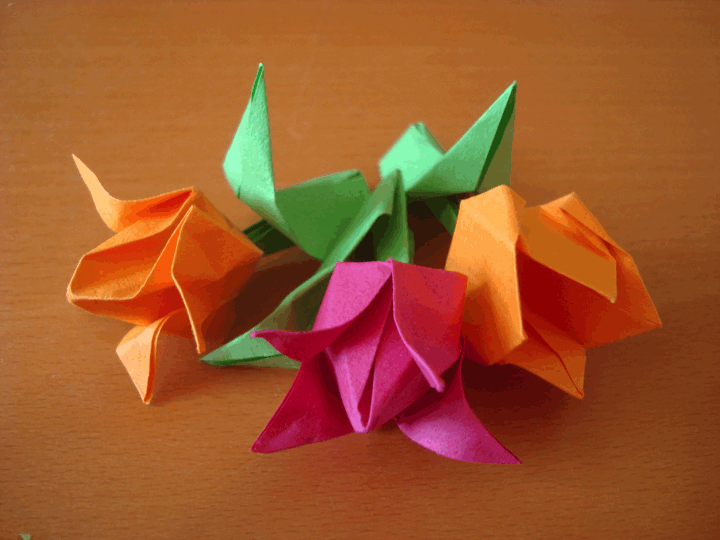
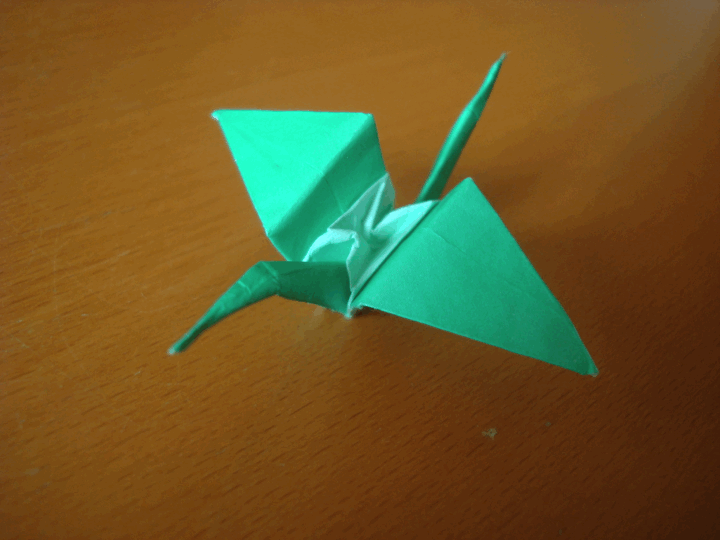
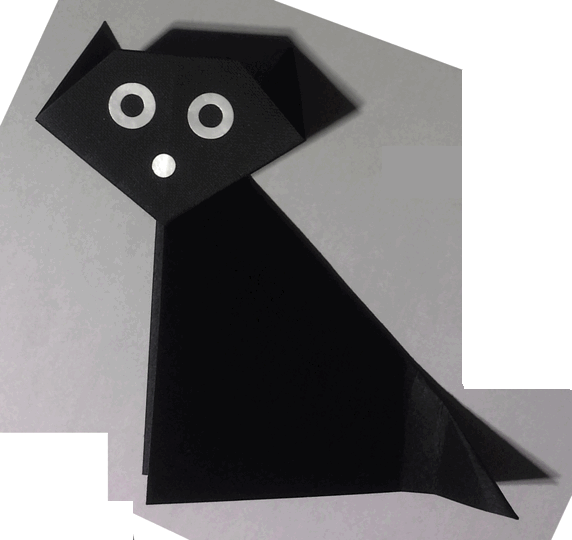
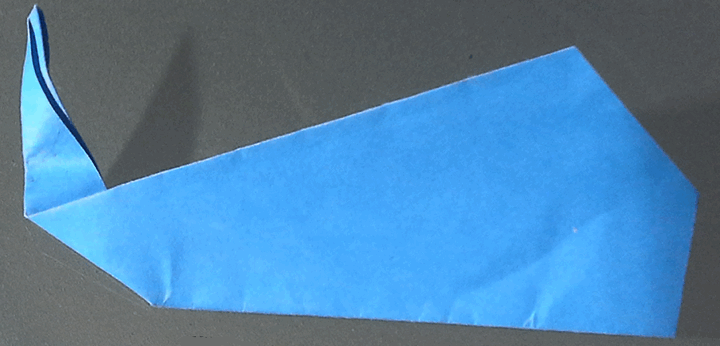
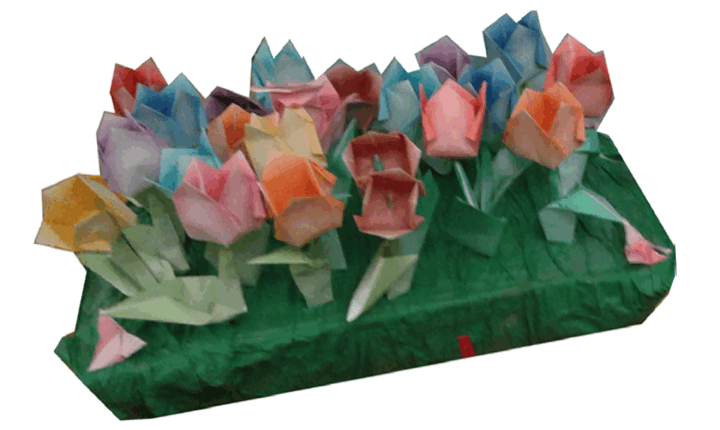
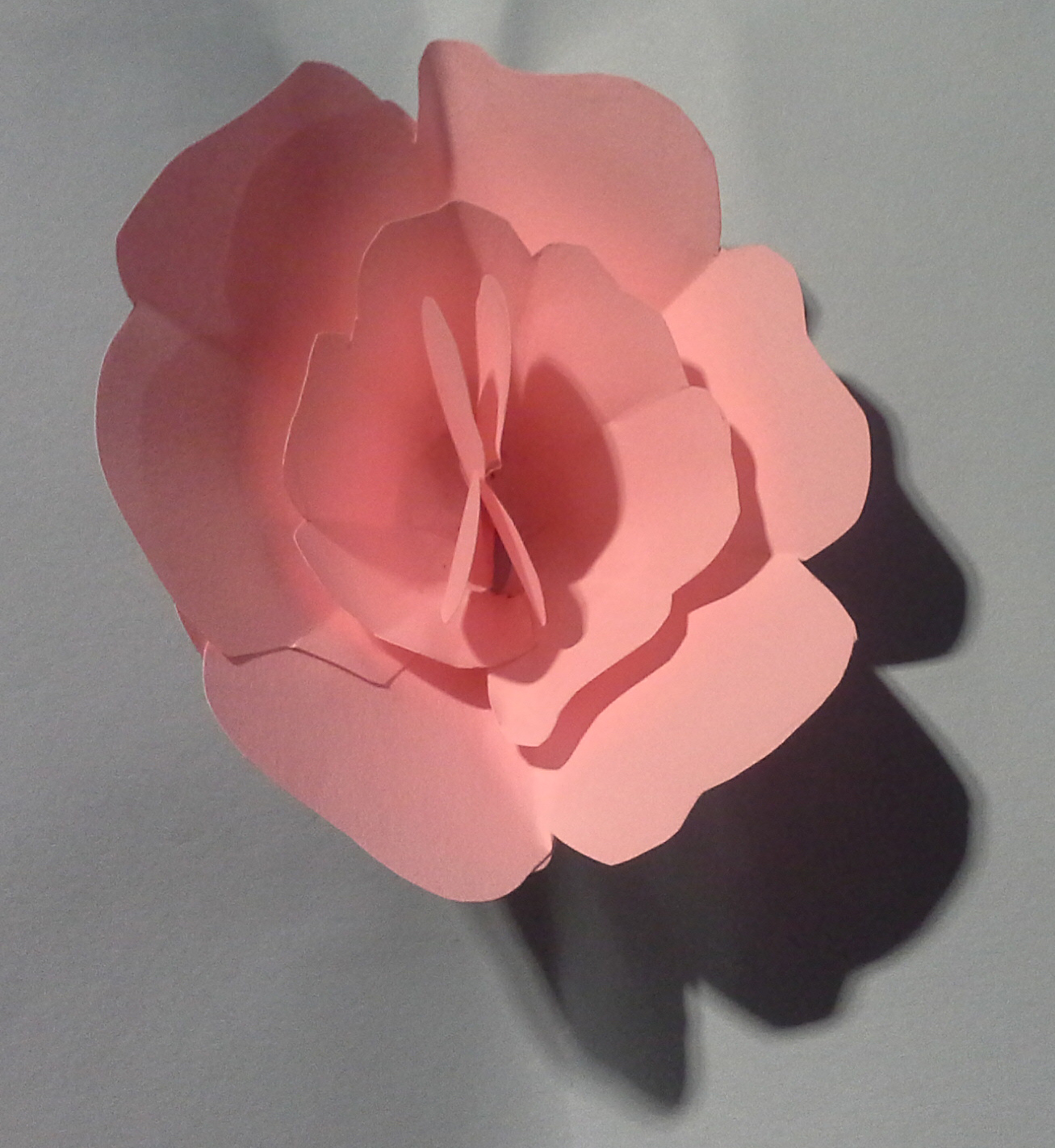
Origami e Kirigami folded by Gemma Turnone (member of the Executive Council of the Center Origami Diffusion)
SHORT ORIGAMI HISTORY
The word “Origami” comes from Japanese "Ori" = to fold and "Kami" = paper; it is a technique based on the fold of a sheet of paper, in order to obtain models of animals, flowers, objects, geometric figures, boxes, without the use of scissors or glues.
The word “Kirigami” comes from Japanese "Kiru" = to cut and "Kami" = paper; by using this technique, a single sheet of paper can be carved and folded, and it is possible to obtain three-dimensional figures without removing pieces of paper.
The Origami art has been developed in Orient, probably concurrently with the invention of the paper, that occurred officially in 105 A.D. in China, where the fold of this new material started. The paper has the property to be folded back several times on itself, without tearing but maintaining the fold perfectly.
In
610 A.D. the
technique for the manufacture of the paper was brought to Japan
by a Buddhist monk and the Japanese people were able to make
the Origami “a
real art ”.
In
Japan, the paper spread quickly, it was considered a noble material,
refined and precious and for this reason it
was used during religious ceremonies
or
during certain important occasions. The first
figures made with the paper
were
exposed in temples
with a
ritual significance. One example, among the oldest, consisted of a
pleated sheet of paper, used to cover the bottle
of sake
 that,
placed on the altar, had the meaning of propitiatory offer, during
religious ceremonies.
that,
placed on the altar, had the meaning of propitiatory offer, during
religious ceremonies.
Even during the Shinto wedding ceremonies it was customary, and it stays still, to apply on the neck of two bottles of sake, stylized models of paper, representing a male butterfly (o-cho) and a female butterfly (me-cho) and this is an auspicious ritual:
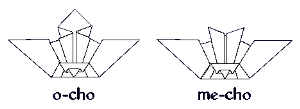
Between
1200 - 1500 A.D.
some
Buddhist sects,
such as Zen,
introduced the rules of etiquette; therefore the Origami,
from
the
temples, reached
the
court,
so that the
letters were submitted to the king in a good form of folding.
Tickets, in shape of butterfly, cranes or flowers, were sent to the
friends as a sign of good luck and they were sent to dear people as a
token of love and dedication. The knowledge of the Origami
became
a symbol of power and good education, for this reason several noble
families used an Origami
as
a coat of arms. The most important figure of this period was the
Noshi: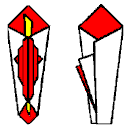 ;
the name of this figure is an abbreviation of Noshi-Awabi,
that is a strip of meat of a marine mollusk, dried under the sun. The
original meaning of the Noshi is unknown, probably the offer of this
food was a hope of good luck, because of its alimentary importance in
medieval Japan. The Noshi is obtained by a simple folding, without
the use of cuts; this tendency became predominant afterwards, in the
so-called “modern
Origami ”.
;
the name of this figure is an abbreviation of Noshi-Awabi,
that is a strip of meat of a marine mollusk, dried under the sun. The
original meaning of the Noshi is unknown, probably the offer of this
food was a hope of good luck, because of its alimentary importance in
medieval Japan. The Noshi is obtained by a simple folding, without
the use of cuts; this tendency became predominant afterwards, in the
so-called “modern
Origami ”.
Between 1600 - 1800 A.D. gradually, the Origami lost the characteristic of being an art reserved to a few people and became a popular hobby. During this period, many models were created and afterwards they became classic models. The most famous model is the Japanese crane, a traditional symbol of long life, but it has become also a symbol of peace, after the atomic explosions that happened in Japan.
The folding techniques of various figures were handed down verbally from generation to generation, until the early eighteenth century; in this period, probably, the first books appeared about the fold instructions.
Between sixteenth and seventeenth centuries, the folding of the paper was known also in Europe, particularly in Spain and in Italy. In those years, right in Italy, a particular type of pleating developed; it was used for the folding of the towels and the napkins, which embellished the tables of the Renaissance. Figures of folded paper were also used by the magicians, to impress the gullible public of that time.
Typical
of the 1700 A.D. period is the routine, also
known as "the magic fan":
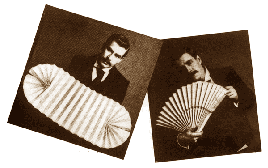 ;
it consisted of a wide strip of paper accordion-pleated in both
directions that, expertly manipulated, gave rise magically to the
most varied figures.
;
it consisted of a wide strip of paper accordion-pleated in both
directions that, expertly manipulated, gave rise magically to the
most varied figures.
Since the nineteenth century, the Origami developed also creatively, with the elaboration of more modern shapes, that led the simple basic rules of the classical models to extreme levels of sophistication and complexity.
The Origami developed rapidly after the Second World War, thanks to the work of several artists, first of all the maestro Akira Yoshizawa. He developed a new way of thinking about Origami, that is known as: "Creative Origami "; the aim was to create new models, out of the traditional schemes.
Look at the video: Akira Yoshizawa Origami Collections
Nowadays, the Origami artworks are an integral part of Japanese culture and they are used in many occasions; an example is the Kodomo no hi, that is the feast of children. Since 1948, this feast has become one of the national holidays, by a decision of the Japanese government; during this celebration, the children make paper flags that have the form of a carp and hang them out of the house door.
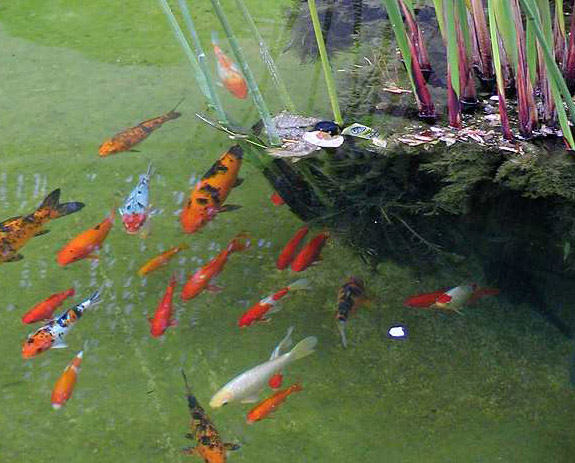 The
carp is
a fish that is considered good luck charm, it is a symbol of
longevity and
strength because
of his long life and because it swims against the current. It is one
of the most famous animals in Japan and frequently you can find it in
the lakes and in the ponds of the Japanese temples and in the
gardens.
The
carp is
a fish that is considered good luck charm, it is a symbol of
longevity and
strength because
of his long life and because it swims against the current. It is one
of the most famous animals in Japan and frequently you can find it in
the lakes and in the ponds of the Japanese temples and in the
gardens.
Get
into the world of Origami by
clicking on this button:![]()
The Art of Origami and Kirigami meets Science
Insights on how the art of Origami and Kirigami is used in advanced scientific projects
|
Look at these videos: |
|
Links for further information: |
In the history of the Origami, the images have been taken from: http://www.origami-cdo.it/articoli/storiadellorigami.html